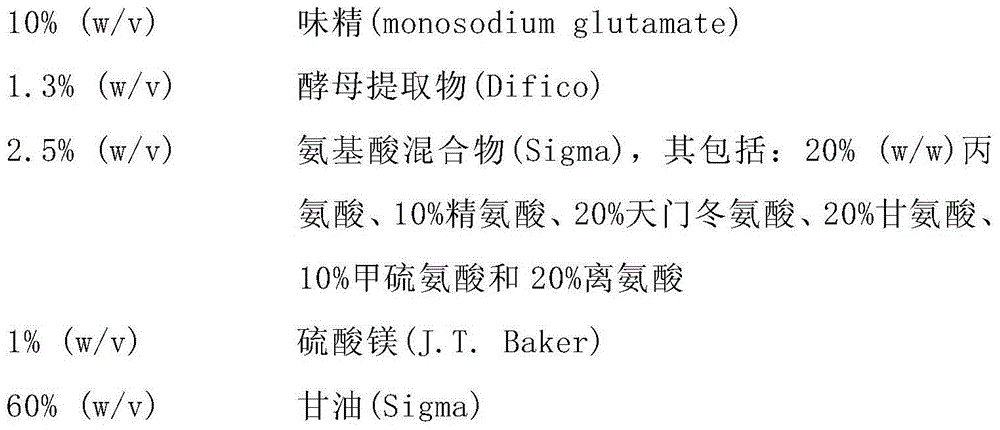Lemna Minor Hydrolysate And Use Thereof
A hydrolyzate and duckweed technology, applied in biochemical equipment and methods, microorganisms, methods based on microorganisms, etc., can solve problems such as poor yield and high price
- Summary
- Abstract
- Description
- Claims
- Application Information
AI Technical Summary
Problems solved by technology
Method used
Image
Examples
example 1
[0032] The preparation of example 1 duckweed hydrolyzate
[0033] Get 100kg of fresh duckweed (Qingping), wash it with a grinder or process it with a juicer. The liquid fraction was collected and filtered to obtain duckweed juice. The obtained duckweed juice (60 L) was treated with 450 A.U. of Protamex at 40° C. for 20 hours to obtain duckweed hydrolyzate.
example 2
[0034] Example 2 prepares lycopene without using duckweed hydrolyzate
[0035] (1) Microorganisms:
[0036] The Escherichia coli CCRC940321 used to prepare lycopene was constructed according to the method disclosed in US7,122,341B1. Briefly, plasmid pCW9 and p2IDEI were introduced into Escherichia coli JCL1613 to obtain lycopene-producing host cells. Escherichia coli CCRC940321 was obtained from the Institute of Food Industry Development (No. 331 Food Road, Hsinchu City, Taiwan).
[0037] (2) Medium:
[0038] Inoculum culture medium:
[0039] 2% (w / v) yeast extract (Difico)
[0040] 2% (w / v) tryptone (Difico)
[0041] 2% (w / v) Glycerin (Sigma)
[0042] Batch medium: (2L)
[0043]
[0044]
[0045] Feed medium: (1L)
[0046]
[0047] (3) Method:
[0048] Add frozen Escherichia coli CCRC940321 to a 250 mL culture shaker flask containing 50 mL of inoculum culture medium, and culture at 32°C for 12 hours with shaking at 150 rpm. The activated cells were transfer...
example 3
[0049] Example 3 is using duckweed hydrolyzate to prepare lycopene
[0050] (1) Microorganisms:
[0051] Escherichia coli CCRC940321
[0052] (2) Medium:
[0053] Inoculum culture medium:
[0054] 2% (w / v) yeast extract (Difico)
[0055] 2% (w / v) tryptone (Difico)
[0056] 2% (w / v) Glycerin (Sigma)
[0057] Batch medium: (2L)
[0058]
[0059] Feed medium: (1L)
[0060]
[0061] (3) Method:
[0062] Add frozen Escherichia coli CCRC940321 to a 250 mL culture shaker flask containing 50 mL of inoculum culture medium, and culture at 32°C for 12 hours with shaking at 150 rpm. The activated cells were transferred to a 5L-fermenter containing 2L batch medium and cultured at 30°C with 400-600rpm agitation and 2L / min aeration. When the cell density (OD600) reaches 15 to 25, the feed medium is added to the fermenter (pH value is controlled at 6.8-7.0). After 108 hours, the cells were harvested at a cell density (OD600) of 190 (equivalent to 62.7 g stem cells per liter of...
PUM
 Login to View More
Login to View More Abstract
Description
Claims
Application Information
 Login to View More
Login to View More - R&D
- Intellectual Property
- Life Sciences
- Materials
- Tech Scout
- Unparalleled Data Quality
- Higher Quality Content
- 60% Fewer Hallucinations
Browse by: Latest US Patents, China's latest patents, Technical Efficacy Thesaurus, Application Domain, Technology Topic, Popular Technical Reports.
© 2025 PatSnap. All rights reserved.Legal|Privacy policy|Modern Slavery Act Transparency Statement|Sitemap|About US| Contact US: help@patsnap.com



